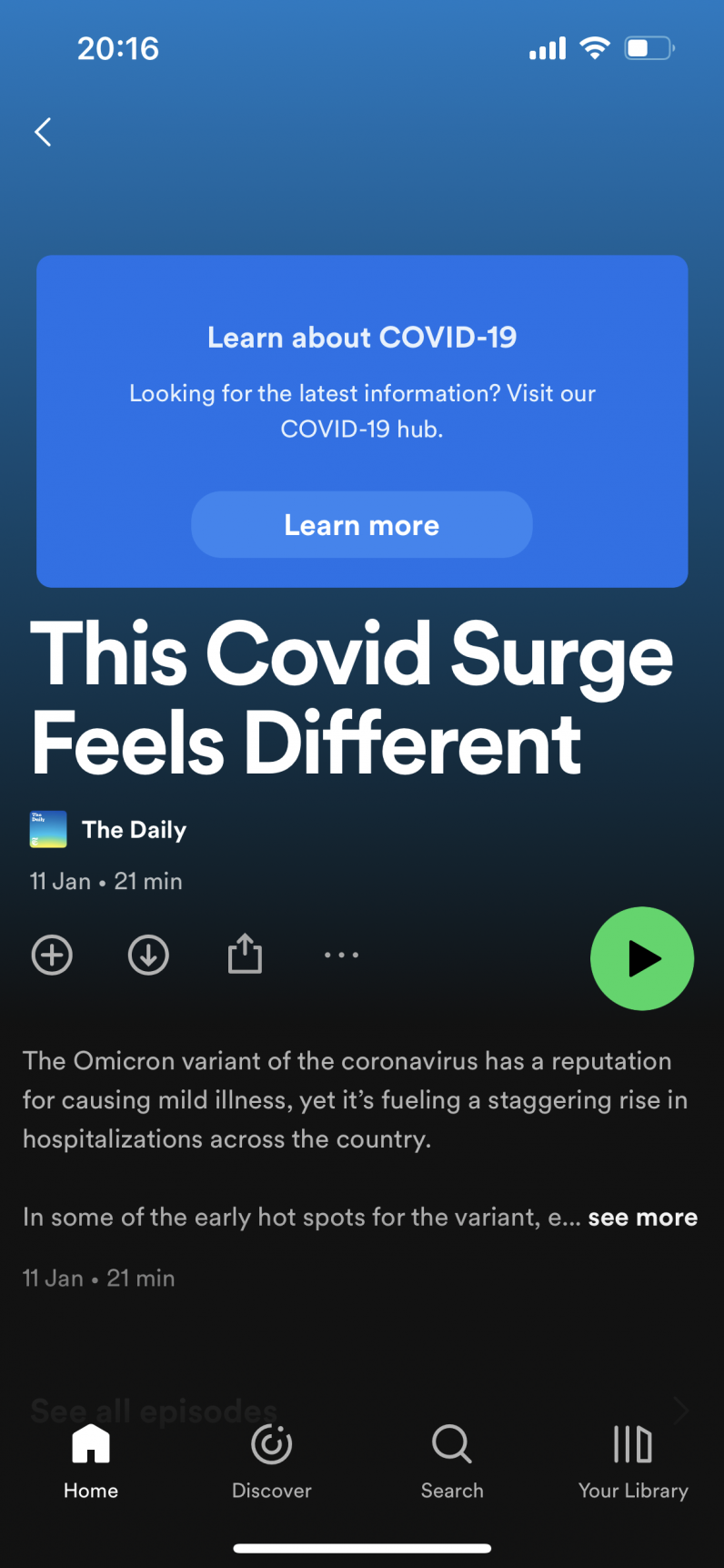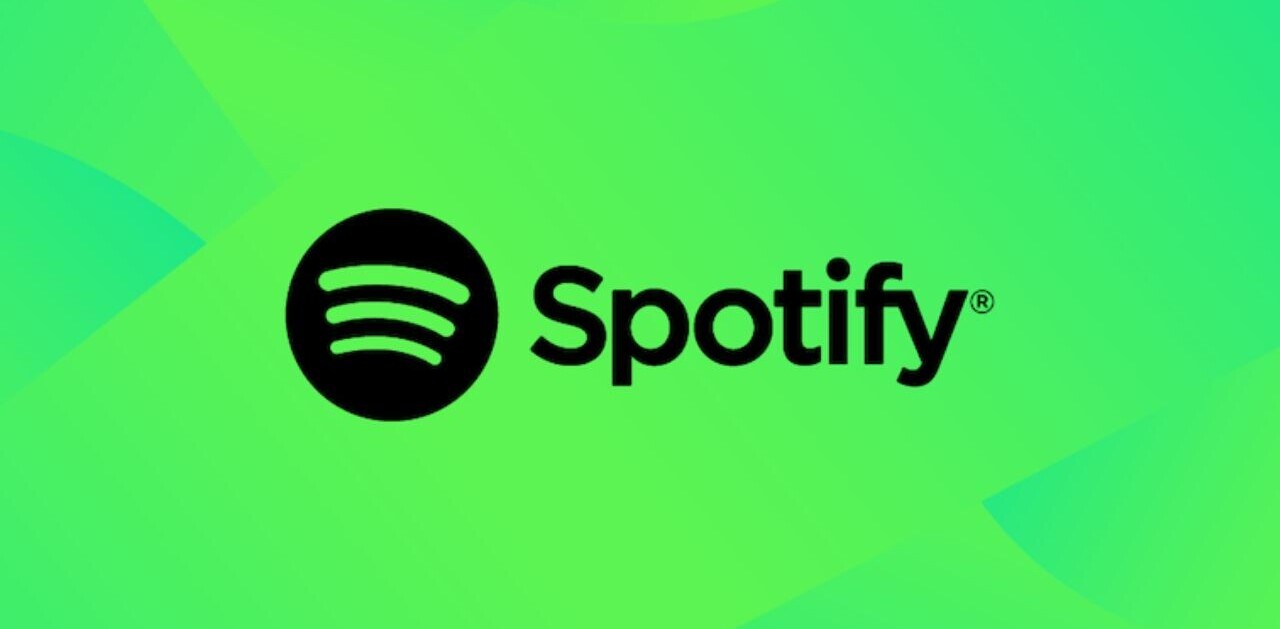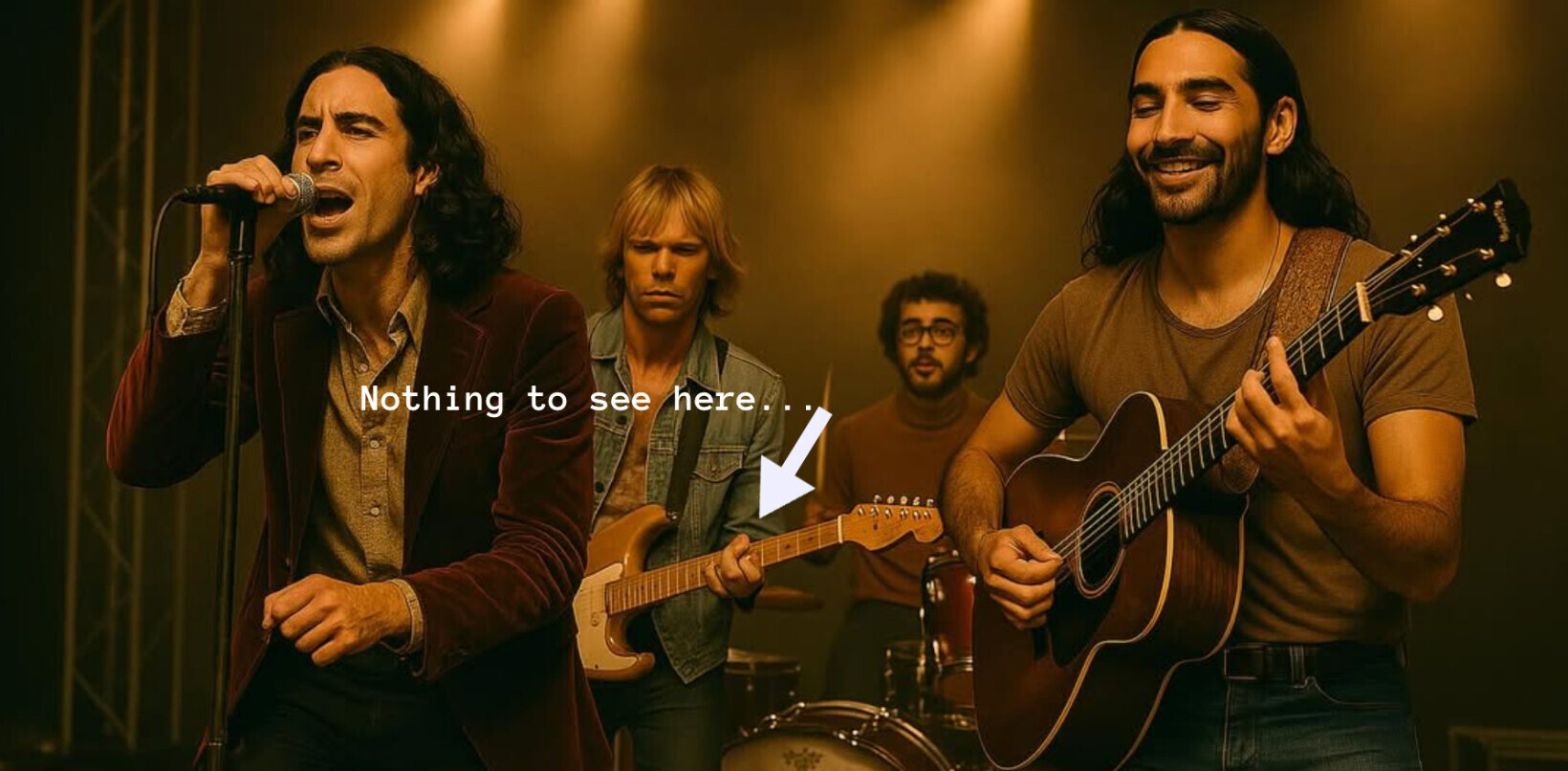(Update 04/02/2021 10AM IST): Spotify provided a screenshot of the COVID-19 label that’ll go with podcast episodes related to it. You can check out what it looks like in the screengrab below.

The tech world can’t stop talking about Spotify — but it doesn’t seem like the streaming giant is actually listening.
For the uninitiated, Neil Young and others have removed their music from Spotify, because they believe Rogan’s podcast — something consumed by millions — contains vaccine misinformation. You can read about the saga here.
The streaming service responded with a blog post saying it will publish its platform rules, and a COVID-19 hub containing globally verified information about the pandemic. Spotify also stated it’ll add a content advisory warning on any podcast episode that discusses COVID-19.
I’ve been listening to podcasts for over 10 years now, and the warnings I’ve come across are usually mentioned aurally at the beginning of an episode.
I asked Spotify if it planned to do the same thing. A spokesperson responded that the advisory label will only be text-based, which will “direct listeners to [its] dedicated COVID-19 hub.”
That sounds like the platform is trying to do the bare minimum to avoid scrutiny or accusation of spreading misinformation. If I’m listening to a podcast, what are the chances that I’m looking at the screen? What if I’m playing it on a smart speaker? Do I need to check my app for labels every time I play an episode?
The streaming service’s text-based content warning plans address none of these problems.
What’s a good health-related content advisory?
Chhavi Sachdev, the founder of Sonologue Podcasting productions, believes it must move beyond just text:
“Episodes with sensitive content must include an advisory in an audio format, and should be from a neutral voice (not from the host). Plus, if it’s health-related, it should spell out unverified claims, and point to the information from trusted sources.”
Amit Doshi, head of India-based production house IVM podcasts, agrees — but pointed out “how hard” it is to implement.
This is a serious problem, so we asked Spotify how it plans to detect episodes that contain COVID-19 information, especially when it publishes thousands of podcasts every day.
We’ll update the story if we receive a response.
Platforms and the COVID-19 misinformation problem
Last year, after governments started administering vaccines, online platforms like YouTube, Twitter, Instagram, and Facebook faced a massive misinformation problem. After much criticism, these companies started booting out content with vaccine misinformation.
For example, Twitter tagged problematic posts like this:
Beginning today, we will label Tweets that may contain misleading information around COVID-19 vaccinations. This is in addition to our ongoing efforts to remove the most harmful COVID-19 misleading information from Twitter.
To learn more, visit our blog.
— Twitter Safety (@TwitterSafety) March 1, 2021
Spotify has also been under fire, but it’s largely maintained the stance that it’s a platform, not a publisher — so it doesn’t want to exercise any editorial control. This is clearly a falsity.
While Spotify’s proposed content advisory tag is a step in the right direction, it doesn’t go far enough.
Dr. Harjit Singh Bhatti, a former president of the resident doctors association at AIIMS, India’s top public hospitals, compared these labels to warnings on cigarette packets, which are often ignored:
Labels applied by social media platforms are often hidden in the fine print of the content. They are part of the marketing campaign by these companies. Plus, they are not doing a good job of highlighting information that is not conveyed by experts.
Studies suggest that labels are effective if they debunk the information using verified resources. However, just posting a warning might not be effective.
Notably, when you use visual platforms like YouTube, Twitter, and Instagram, you can see these labels while scrolling. On an audio-first platform like Spotify, the chances of you noticing them goes down drastically.
As Doshi said, the effectiveness of these kinds of solutions ends up looking like “lipstick on a pig.”
One thing’s clear: Spotify wants to shy away from the responsibility of policing itself and the content it hosts. But, as we’ve seen with Facebook, the whole “platform not publisher” argument doesn’t have legs.
Spotify’s reckoning might not be now, but it won’t be long. And a few warning labels won’t stop its eventual comeuppance.
Get the TNW newsletter
Get the most important tech news in your inbox each week.






